Don't wanna be here? Send us removal request.
Text
How do I set up a PPC campaign?
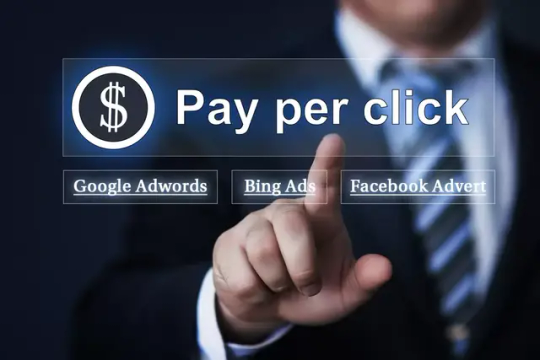
In today’s digital landscape, Pay-Per-Click (PPC) advertising is one of the fastest and most measurable ways to drive targeted traffic to your website. Whether you’re a small business owner or a digital marketer, understanding how to set up a successful PPC campaign is essential to achieving your online goals.
This article will guide you through the step-by-step process of setting up a PPC campaign, including strategy, execution, and optimization—without keyword stuffing and with clarity for both beginners and experienced users.
What is a PPC Campaign?
A PPC campaign is a form of online advertising where advertisers pay a fee each time someone clicks on their ad. These ads appear on platforms like Google Ads, Bing Ads, or social media networks like Facebook, Instagram, and LinkedIn. The goal is to attract users actively searching for your product or service.
Steps to Set Up a PPC Campaign
1. Define Your Goals
Before you launch your campaign, ask yourself:
Do you want to generate leads?
Are you trying to increase website traffic?
Are you selling a product or service?
Clear goals will guide every part of your PPC setup, including keyword selection, ad copy, and budget allocation.
2. Choose the Right Platform
Select a PPC platform based on your audience and industry. Popular choices include:
Google Ads – Best for broad reach and search intent
Bing Ads – Often cheaper with less competition
Facebook & Instagram Ads – Great for visual products and audience targeting
LinkedIn Ads – Ideal for B2B campaigns
Choose one or more based on where your audience spends time.
3. Conduct Keyword Research
For search-based PPC (like Google Ads), keyword research is crucial. Use tools like:
Google Keyword Planner
Ubersuggest
SEMrush (free version)
AnswerThePublic
Look for:
High-intent keywords (e.g., "buy running shoes online")
Low-to-moderate competition terms for better ROI
Avoid broad keywords initially—they may drain your budget with unqualified clicks.
4. Set Your Budget and Bidding Strategy
Decide how much you’re willing to spend daily or monthly. Then choose your bidding strategy:
Manual CPC: You control maximum cost-per-click.
Enhanced CPC: Google adjusts bids for higher conversions.
Target CPA: Set a cost-per-acquisition goal.
Maximize Clicks: Google tries to get the most clicks within your budget.
Start small, track performance, and scale once you see results.
5. Create High-Quality Ads
Your ad copy should be:
Relevant to your keyword
Compelling with a clear call to action
Specific to the user's search intent
Include:
A headline that grabs attention
A description that solves a problem or offers a benefit
A display URL (clean and keyword-rich)
Ad extensions like callouts, sitelinks, or call buttons
6. Design a Landing Page That Converts
Don’t send clicks to your homepage. Create a dedicated landing page that:
Matches your ad’s message
Has a clear and prominent CTA (e.g., “Get a Free Quote”)
Loads quickly and works well on mobile
Includes trust elements (reviews, testimonials, certifications)
Tools like Unbounce, Instapage, or WordPress make it easy to build landing pages.
7. Launch and Monitor Your Campaign
Once everything is set:
Launch your campaign
Set tracking with Google Analytics and conversion pixels
Monitor metrics such as:
Click-through rate (CTR)
Quality score
Cost-per-click (CPC)
Conversion rate
Regularly check your search terms report to exclude irrelevant searches by adding negative keywords.
8. Optimize Continuously
A successful PPC campaign is never “set and forget.” Regularly:
A/B test ad variations
Adjust bids based on device, location, or time
Pause underperforming keywords
Update landing pages for better conversions
The goal is to maximize ROI by continuously improving your campaign elements.
Final Thoughts
Setting up a PPC campaign might seem complex at first, but breaking it down into actionable steps makes the process manageable. From setting clear goals and choosing the right keywords to optimizing ads and tracking performance, each part plays a vital role in your campaign’s success.
You don’t need a massive budget—just a thoughtful approach, consistent analysis, and a willingness to improve over time.
By following this guide, you’ll be on your way to creating a high-performing PPC campaign that delivers measurable results for your business.
0 notes
Text
How do you run a PPC campaign for beginners?
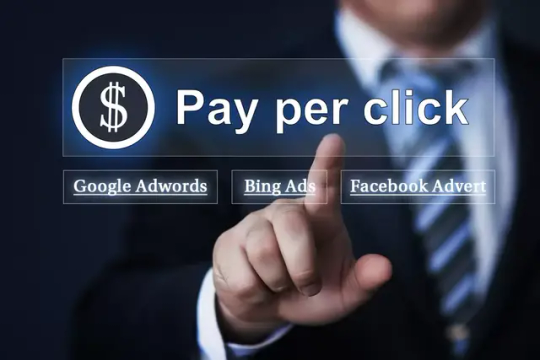
Running a Pay-Per-Click (PPC) campaign may seem overwhelming at first, especially if you're new to digital marketing. But the good news is that with the right approach, anyone can learn to create a simple, cost-effective PPC campaign that delivers results. Whether you’re promoting a product, service, or blog, PPC allows you to reach your audience quickly and measure your return on investment with precision.
This beginner-friendly guide breaks down how to run a PPC campaign step by step—clearly, effectively, and without jargon or keyword stuffing.
What Is a PPC Campaign?
A PPC campaign is an online advertising model where you pay a fee each time someone clicks on your ad. It’s commonly used on search engines like Google and Bing, as well as platforms like Facebook, Instagram, and LinkedIn. The idea is to drive targeted traffic to your website based on user behavior, keywords, or interests.
Step-by-Step Guide to Running a PPC Campaign (for Beginners)
1. Set a Clear Goal
Before spending money, identify what you want to achieve:
Do you want more website visitors?
Are you trying to generate leads?
Do you want users to buy something?
Your goal will guide every other step—from keyword choices to your landing page design.
2. Choose the Right PPC Platform
Depending on your audience and objective, select the platform that makes the most sense:
Google Ads – Best for search intent (people actively looking for something)
Facebook/Instagram Ads – Ideal for visual content and targeting by interest or demographics
LinkedIn Ads – Best for professional or B2B targeting
For beginners, Google Ads is a great place to start due to its wide reach and intuitive tools.
3. Do Basic Keyword Research
If you're running a search ad campaign, keywords matter. Use free tools like:
Google Keyword Planner
Ubersuggest
AnswerThePublic
Look for:
Relevant keywords to your product or service
Low-to-medium competition terms (they’re cheaper and often more effective)
Long-tail keywords (e.g., “best shoes for running at night”) for better targeting
4. Set a Realistic Budget
You don’t need a large budget to get started. Most platforms allow:
Daily budgets (e.g., $5/day)
Flexible bidding strategies (manual or automatic)
Start small. Once you understand what works, you can scale
5. Create an Effective Ad
Your ad should be:
Simple and clear
Relevant to the search query
Focused on a benefit or solution
Include a strong CTA (Call to Action), such as “Sign Up,” “Get a Free Quote,” or “Buy Now”
Example:
Headline: Affordable Digital Marketing Services Description: Boost your business online with expert SEO & PPC. Get a free consultation today!
6. Build a Landing Page That Matches the Ad
Avoid sending traffic to your homepage. Instead, create a landing page that:
Matches the promise made in the ad
Has a strong CTA
Loads fast and works on mobile
Is clear, concise, and easy to navigate
A well-designed landing page significantly increases your chances of conversions
7. Set Up Conversion Tracking
Use tools like:
Google Analytics
Facebook Pixel
UTM parameters
Tracking lets you measure what actions users take after clicking your ad—like filling out a form, making a purchase, or downloading something.
8. Launch and Monitor Your Campaign
Once live, keep an eye on important metrics:
Click-Through Rate (CTR) – How many people clicked your ad vs. how many saw it
Cost-Per-Click (CPC) – How much you’re paying per visitor
Conversion Rate – How many clicks turned into real actions
If your campaign isn’t performing well, try adjusting:
Keywords
Ad copy
Budget allocation
Landing page content
Pro Tips for Beginners
Use Negative Keywords: Prevent your ad from showing up for irrelevant searches.
Test Multiple Ads: Try different versions of headlines and descriptions (A/B testing).
Start with Search Ads: Easier to manage than display or video ads for first-timers.
Keep Learning: PPC trends and platform algorithms change. Stay updated through blogs, YouTube, and free courses.
Final Thoughts
Running a PPC campaign doesn’t require advanced tech skills or a big budget. With the right tools and approach, beginners can successfully launch and manage campaigns that drive real value. By understanding your audience, using relevant keywords, writing compelling ads, and monitoring results, you’ll be well on your way to mastering PPC advertising.
Start small, keep testing, and scale when you start seeing results. PPC is not just about clicks—it’s about turning those clicks into conversions.
0 notes
Text
What is PPC in e commerce?
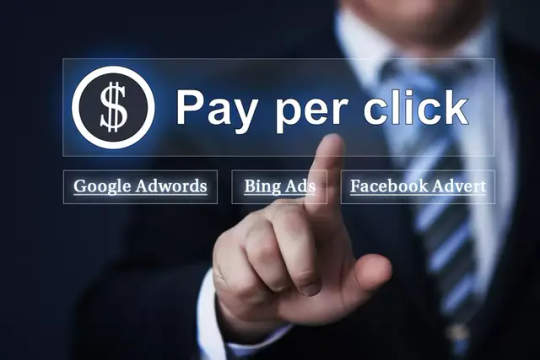
In today’s competitive digital landscape, Pay-Per-Click (PPC) advertising has emerged as a powerful marketing tool for e-commerce businesses. With millions of online stores vying for consumer attention, PPC allows e-commerce brands to get their products in front of potential buyers quickly and effectively. But what exactly is PPC in the context of e-commerce, and how does it benefit online businesses?
This article will explain PPC in e-commerce, how it works, and why it’s crucial for success in online selling.
Understanding PPC in E-commerce
PPC in e-commerce refers to paid advertising models where online retailers pay a fee every time a user clicks on their ad. These ads can appear on:
Search engines (Google, Bing)
Social media platforms (Facebook, Instagram, TikTok)
E-commerce marketplaces (Amazon, eBay)
Display networks (banner ads on websites)
The ultimate goal? To drive targeted traffic to your online store and convert clicks into sales.
How Does PPC Work in E-commerce?
Here’s a simplified breakdown of how a typical PPC campaign functions in the e-commerce world:
Advertiser selects keywords related to the products they sell (e.g., “buy wireless headphones”).
They create an ad and bid on those keywords.
When a user types that keyword in a search engine or visits a relevant website, the ad appears.
If the user clicks on the ad, the advertiser pays a fee.
The user is redirected to the product or landing page.
If the campaign is well-optimized, the cost per click (CPC) is far outweighed by the revenue generated from product sales.
Common PPC Platforms Used in E-commerce
1. Google Ads (Search and Shopping Ads)
Most popular PPC platform for e-commerce
Enables text ads and Google Shopping ads with product images and prices
Highly intent-driven: users are actively searching to buy
2. Facebook and Instagram Ads
Great for product discovery
Uses demographics, interests, and behavior for targeting
Works well for visually appealing products (clothing, gadgets, accessories)
3. Amazon Sponsored Ads
Ideal for sellers already on Amazon
Shows your product directly in search results
Converts well due to buyer intent on Amazon
4. YouTube and Display Ads
Useful for brand awareness and retargeting
Can display visual/video content to users across the web
Benefits of PPC in E-commerce
1. Instant Visibility
Unlike SEO, which takes time, PPC can put your product in front of potential buyers immediately.
2. Targeted Advertising
You can target by:
Keywords
Location
Age and gender
Interests
Device type
This precision increases your return on ad spend (ROAS).
3. Measurable Results
Track every click, impression, conversion, and sale using tools like:
Google Analytics
Meta Business Suite
Amazon Seller Central
4. Scalable Campaigns
Start small and scale based on performance. Adjust budget, audience, and creative without starting over.
Key Components of a Successful E-commerce PPC Campaign
To ensure a PPC campaign delivers a solid return on investment, focus on:
Keyword Research
Find buyer-intent keywords that match your product listings.
Compelling Ad Copy
Clear, benefit-driven language with strong calls to action like “Shop Now” or “Free Shipping.”
High-Quality Product Pages
Once users click, make sure your product pages:
Load fast
Have clear product images
Include detailed descriptions
Offer easy checkout options
Retargeting
Show ads to users who visited your site but didn’t make a purchase. These users are more likely to convert later.
How Much Does E-commerce PPC Cost?
There is no fixed price—it depends on:
Competition for your keywords
The ad platform
Your industry
Your budget
On Google Ads, for example, average CPC for e-commerce ranges from $0.50 to $2, but can be higher in competitive niches.
Tips to Get Started with PPC in E-commerce
Start with a small budget to test different ad formats.
Use Google Shopping ads for better product visibility.
Split test your ads (A/B testing) to improve click-through and conversion rates.
Monitor your campaigns daily to avoid overspending.
Use retargeting and lookalike audiences for improved ROI.
Conclusion
PPC in e-commerce is more than just placing ads—it’s about targeting the right audience, at the right time, with the right product. When used correctly, PPC can significantly boost online visibility, drive qualified traffic, and increase sales. For e-commerce businesses looking to grow and scale, mastering PPC is not optional—it’s essential.
Whether you're just launching your online store or looking to increase sales during peak seasons, PPC is a powerful tool in your digital marketing arsenal.
0 notes
Text
What is PPC and how it works?
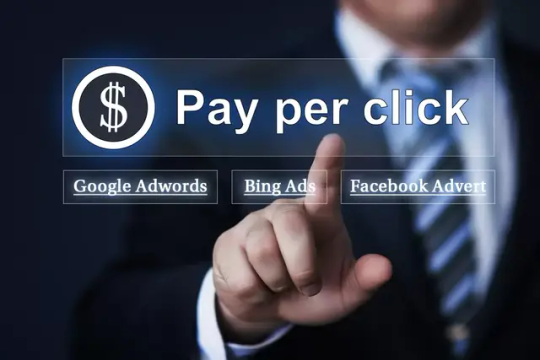
In the digital age, businesses of all sizes are investing in online advertising to reach new customers and grow their brands. Among the most effective and measurable forms of digital advertising is PPC—short for Pay-Per-Click. This model of internet marketing has transformed how companies drive traffic, generate leads, and increase sales online.
This article offers a beginner-friendly explanation of what PPC is, how it works, and why it’s a key part of many digital marketing strategies.
What is PPC (Pay-Per-Click)?
PPC (Pay-Per-Click) is a type of online advertising where advertisers pay a fee each time their ad is clicked. It’s essentially a way of buying visits to your website, rather than earning those visits organically through search engine optimization (SEO).
PPC ads appear on search engines (like Google or Bing), social media platforms (such as Facebook or LinkedIn), and websites in display networks. When done right, PPC can deliver targeted traffic and high conversion rates.
How Does PPC Work?
At the core of PPC is a bidding system. Here’s a simplified breakdown of how the process works:
1. Keyword Selection
Advertisers choose keywords that are relevant to their product or service. For example, a company selling athletic shoes might choose keywords like “buy running shoes” or “best shoes for jogging.”
2. Bidding
Advertisers set a maximum bid—how much they are willing to pay when someone clicks their ad. This is part of a real-time auction system.
3. Ad Auction and Placement
When a user searches for a keyword, an automated auction takes place among all advertisers bidding on that term. The search engine evaluates:
Bid amount
Ad quality and relevance
Landing page experience
Based on these factors, the search engine determines which ads appear, in what order, and at what cost per click.
4. Pay Only for Clicks
If your ad appears and someone clicks it, you are charged. If they don’t click, you don’t pay—hence the name, pay-per-click.
Types of PPC Ads
PPC isn’t limited to just one type of ad. Below are the most common formats:
Search Ads
These appear at the top of search engine results when someone types in a query. Google Ads is the most popular platform for this format.
Display Ads
These are image or banner ads shown on websites within a display network. They’re great for brand awareness and retargeting.
Shopping Ads
Often used in e-commerce, these ads showcase product images, prices, and store names directly in search results.
Social Media PPC Ads
Platforms like Facebook, Instagram, LinkedIn, and Twitter allow advertisers to place PPC ads targeted by interests, behaviors, demographics, and more.
Benefits of PPC Advertising
Immediate Results
Unlike SEO, which can take months to show results, PPC ads can start driving traffic as soon as they go live.
Highly Targeted
You can target users based on:
Location
Device
Language
Interests
Time of day
Budget Control
You can set daily or monthly limits. No surprises—once your budget is spent, your ads stop running.
Trackable and Measurable
Every click, impression, and conversion is trackable. This makes PPC one of the most data-driven advertising models available.
Key Elements of a Successful PPC Campaign
To make the most of PPC advertising, pay attention to these core components:
1. Keyword Research
Choose relevant and high-intent keywords to attract the right audience.
2. Ad Copy
Write clear, compelling ads that highlight benefits and include a strong call-to-action (e.g., “Buy Now,” “Get a Free Quote”).
3. Landing Page Quality
Ensure the page users land on is fast, mobile-friendly, and relevant to the ad.
4. Performance Monitoring
Use tools like Google Ads dashboard and Google Analytics to analyze click-through rates (CTR), cost per click (CPC), and conversion rates.
How Much Does PPC Cost?
The cost of PPC advertising varies depending on:
Industry competitiveness
Keyword demand
Target audience
Geographic location
For example, highly competitive industries like finance or law may have CPCs over $10, while other niches may see CPCs below $1.
The beauty of PPC is flexibility—you can start with a small budget and scale up once you see results.
Getting Started with PPC
If you’re new to PPC, here’s how to begin:
Choose a Platform – Google Ads is the most popular, but Facebook Ads may suit visual products better.
Set a Budget – Begin small (e.g., $5–$10/day) to test campaigns.
Pick Your Keywords – Use keyword tools to find high-converting terms.
Create Ads – Write attention-grabbing headlines and descriptions.
Build Landing Pages – Align your landing page content with the ad.
Track Performance – Use analytics to measure success and adjust accordingly.
Conclusion
PPC classes is a powerful and strategic tool for businesses seeking immediate visibility, measurable ROI, and targeted customer acquisition. Whether you're running a small business or managing a large-scale e-commerce operation, understanding what PPC is and how it works can help you make smarter digital marketing decisions.
When used correctly, PPC can generate high-quality traffic, boost conversions, and support overall business growth.
0 notes
Text
What is PPC advertising?
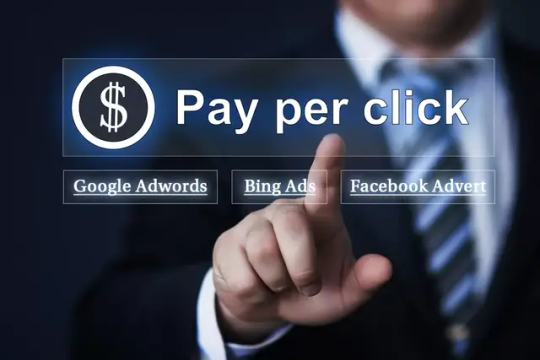
In the world of digital marketing, PPC advertising has emerged as a powerful tool for businesses to drive traffic, generate leads, and increase sales with measurable results. Whether you're a small local business or a global brand, PPC offers a way to reach your audience exactly when they're searching for your products or services.
This article will explain what PPC advertising is, how it works, its major components, benefits, and how to get started.
Definition of PPC Advertising
PPC (Pay-Per-Click) advertising is an online marketing model in which advertisers pay a fee each time their ad is clicked. Instead of earning organic visits through search engine optimization (SEO), PPC allows businesses to buy visits to their websites via targeted ads.
The most well-known PPC platform is Google Ads, but other platforms like Bing Ads, Facebook Ads, Instagram Ads, and LinkedIn Ads also use the same model.
How Does PPC Advertising Work?
PPC advertising functions through a bidding system and keyword targeting. Here’s how the process works:
1. Keyword Selection
Advertisers choose keywords that their target audience is likely to search for. For example, a bakery may use keywords like “order birthday cake online” or “best chocolate cake near me.”
2. Bidding in the Auction
Each advertiser sets a maximum bid for how much they’re willing to pay per click on a particular keyword.
3. Ad Placement
When a user enters a search query, the platform runs an auction based on:
Keyword relevance
Bid amount
Ad quality (measured by CTR, relevance, landing page experience)
The ads that win the auction are shown to the user.
4. Cost per Click
You only pay when someone actually clicks on your ad—not when it’s viewed.
Key Components of a PPC Campaign
A well-structured PPC campaign consists of several critical elements:
Keywords
Selecting high-intent, relevant keywords is the foundation of PPC. Use keyword research tools like Google Keyword Planner or SEMrush.
Ad Copy
Your ad must be compelling, clear, and offer value—usually with a strong call-to-action (e.g., “Sign Up Free,” “Call Now”).
Landing Page
The user’s destination after clicking the ad. A good landing page matches the ad’s promise and encourages conversions.
Ad Extensions
These are additional links or info (e.g., phone numbers, ratings, location) that enhance your ad’s appearance and clickability.
Benefits of PPC Advertising
PPC offers many advantages that make it attractive to marketers and business owners:
Immediate Results
Unlike SEO, which takes time, PPC campaigns can start delivering traffic the same day they go live.
Highly Targeted
You can target by keywords, location, device type, demographics, time, and even interests or behaviors.
Budget Control
Set daily or campaign-level budgets and adjust them anytime. You’re only charged for actual clicks.
Performance Tracking
Every metric—from impressions to conversions—is measurable. This allows for optimization and better ROI.
Brand Visibility
Even if people don’t click, your ad appears on top of search results—boosting brand awareness.
Where is PPC Used?
PPC can be implemented across multiple digital platforms, including:
Search Engines: Google Ads, Bing Ads
Social Media: Facebook, Instagram, LinkedIn, Twitter
E-commerce Platforms: Amazon PPC, Etsy Ads
Display Networks: Banner and visual ads on partner websites
Each platform offers unique targeting features and audience reach, depending on your business goals.
How to Get Started with PPC?
Here’s a beginner’s roadmap to launching your first PPC campaign:
Choose a Platform – Google Ads is a popular starting point.
Do Keyword Research – Use keyword tools to find terms your audience uses.
Write Ad Copy – Make it clear, relevant, and action-oriented.
Create a Landing Page – Align it with your ad message.
Set a Budget – Start small and scale once you see results.
Monitor Performance – Use analytics tools to refine your strategy.
Is PPC Right for Every Business?
PPC can benefit most businesses, but its effectiveness depends on:
Your industry and competition
The lifetime value of your customer
Your ad spend budget
How well you optimize your campaigns
If your goal is quick traffic, lead generation, or brand exposure, PPC is a smart investment. However, it should ideally be combined with long-term strategies like SEO and content marketing.
Conclusion
PPC advertising course is a dynamic, scalable, and results-driven strategy that can give businesses a competitive edge in the online marketplace. By understanding how it works and implementing it with best practices, you can effectively drive targeted traffic, maximize ROI, and grow your business presence online.
Whether you're a beginner or a growing brand, PPC offers a level of control, precision, and measurability that few other marketing channels can match.
0 notes
Text
What is the introduction of PPC?
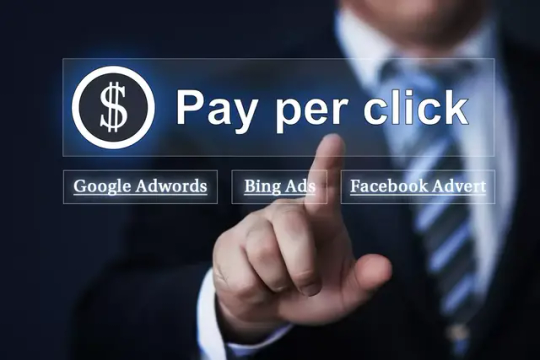
In the fast-paced world of digital marketing, Pay-Per-Click (PPC) advertising has emerged as a highly effective strategy for businesses to attract potential customers, drive targeted traffic, and improve their online visibility. Whether you’re a small business owner or part of a large corporation, PPC offers measurable results and a flexible marketing approach that complements long-term SEO efforts.
This article provides a comprehensive introduction to PPC, its structure, how it works, and why it’s important in today’s digital landscape.
What is PPC?
PPC (Pay-Per-Click) is an internet advertising model where advertisers pay a fee each time a user clicks on their ad. Rather than earning traffic organically, PPC allows marketers to buy visits to their website, helping them appear at the top of search results quickly.
The most popular platforms for PPC advertising include:
Google Ads
Bing Ads
Facebook Ads
LinkedIn Ads
Instagram Ads
These platforms allow advertisers to bid for ad placement in a search engine’s sponsored links when someone searches for a keyword related to their business offering.
How Does PPC Work?
PPC operates on a bidding system and keyword targeting model. Here’s a simplified overview of how it functions:
Keyword Research Advertisers research and choose keywords relevant to their business or services.
Ad Creation They create engaging ads and assign a landing page (the webpage where users will be directed).
Bid Setting Advertisers set a maximum cost they're willing to pay for a single click.
Ad Auction When a user searches for a keyword, the platform runs an auction to determine which ads appear and in what order.
User Interaction If a user clicks the ad, the advertiser is charged, and the user is taken to the landing page.
This model ensures that companies only pay when there is actual engagement with their advertisement.
Key Elements of a PPC Campaign
An effective PPC campaign is made up of several critical components:
Relevant Keywords: Choosing the right keywords is essential for reaching the right audience.
High-Quality Ad Copy: The content must be concise, clear, and compelling.
Landing Pages: Your landing page should be optimized to convert visitors into customers.
Targeting Options: Include demographic, geographic, device, and interest-based targeting.
Performance Tracking: Platforms provide real-time data on impressions, clicks, conversions, and ROI.
Why is PPC Important?
PPC advertising plays a crucial role in modern digital marketing strategies for the following reasons:
Instant Visibility: Unlike SEO, which takes time to build, PPC gets your ads on the first page of search engines quickly.
Budget Control: You control how much you spend daily or monthly.
Measurable Results: Every aspect of the campaign is trackable—from costs to conversions.
Advanced Targeting: Reach specific users based on their online behavior and preferences.
Scalability: You can start with a small budget and scale as you see results.
For marketers and business owners wanting hands-on expertise, enrolling in a PPC training in Chandigarh can offer practical knowledge and up-to-date strategies tailored to current industry trends.
While both methods are important, PPC gives businesses faster exposure, making it ideal for product launches, promotions, or events.
Who Should Use PPC?
PPC advertising is valuable for:
E-commerce businesses
Local service providers
Startups and tech companies
Educational institutions
Real estate agencies
Event management firms
Regardless of your industry, if your goal is quick traffic, leads, and conversions, PPC is a tool worth investing in.
Conclusion
PPC advertising is a results-driven marketing strategy that helps businesses target specific audiences, generate leads, and drive conversions with precision and speed. It allows brands to reach their potential customers at the exact moment they’re searching for products or services. With the right approach, PPC can deliver exceptional ROI and contribute significantly to your business growth.
For those looking to master PPC skills, enrolling in PPC training in Chandigarh can be a great step toward becoming a certified digital marketer equipped to run successful ad campaigns across multiple platforms.
0 notes